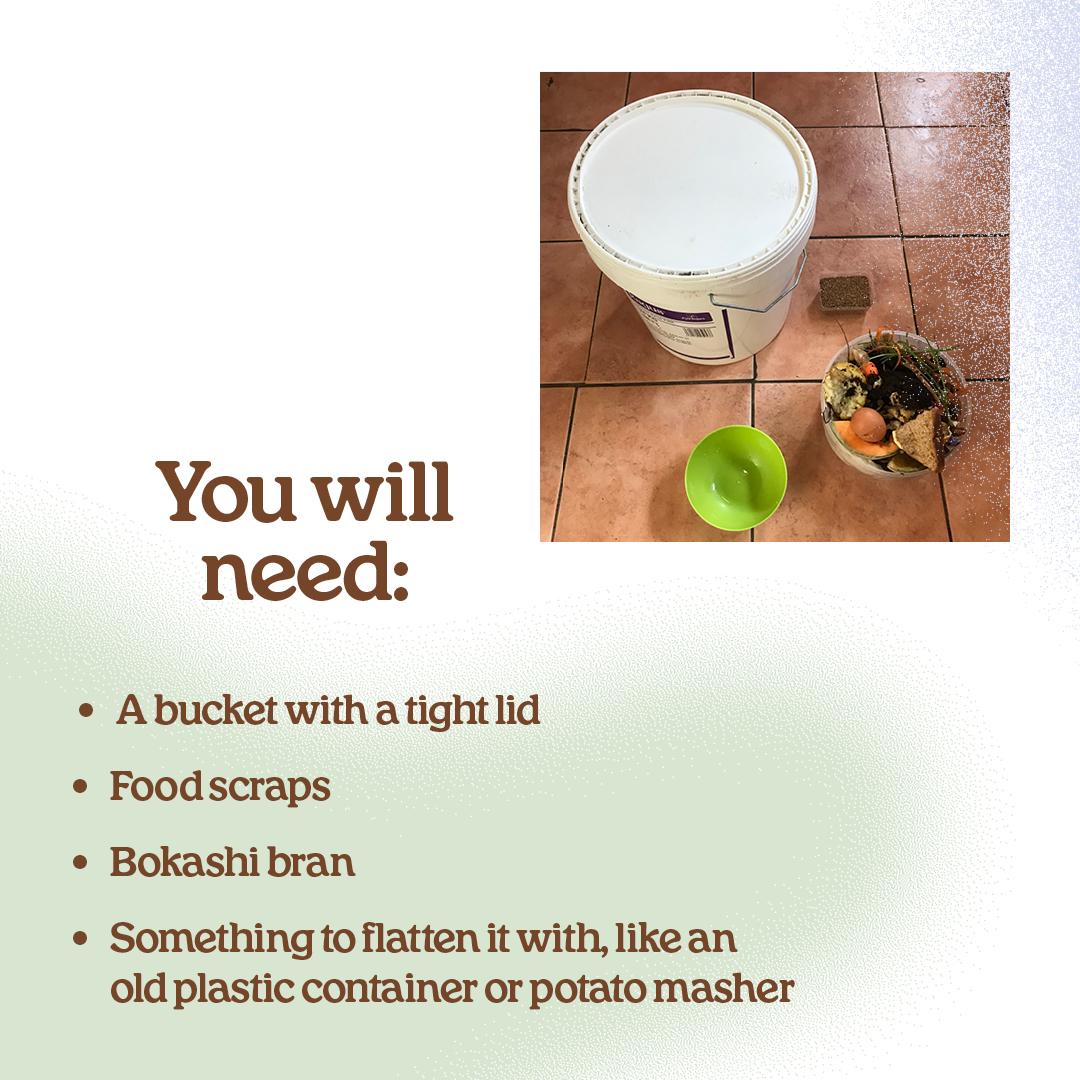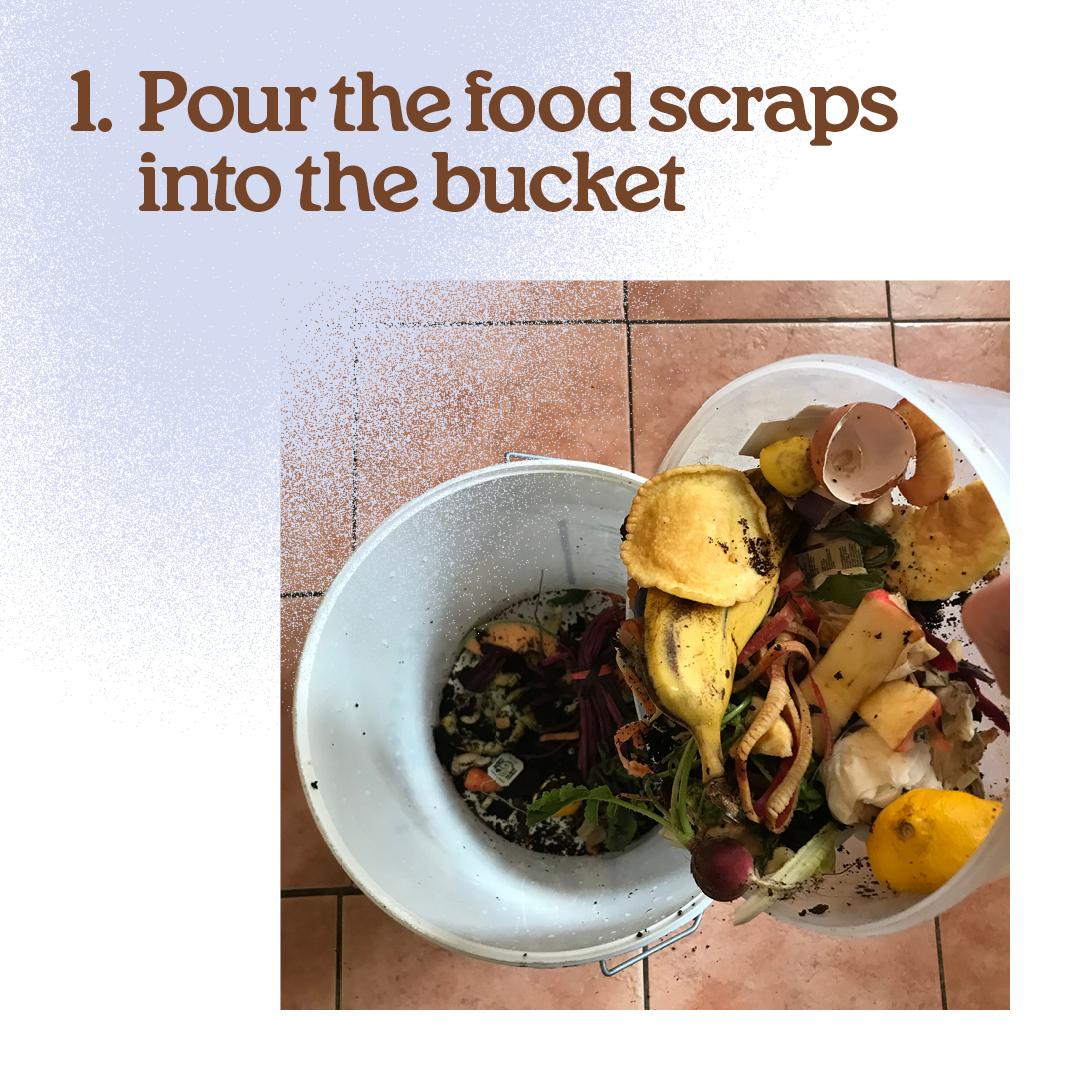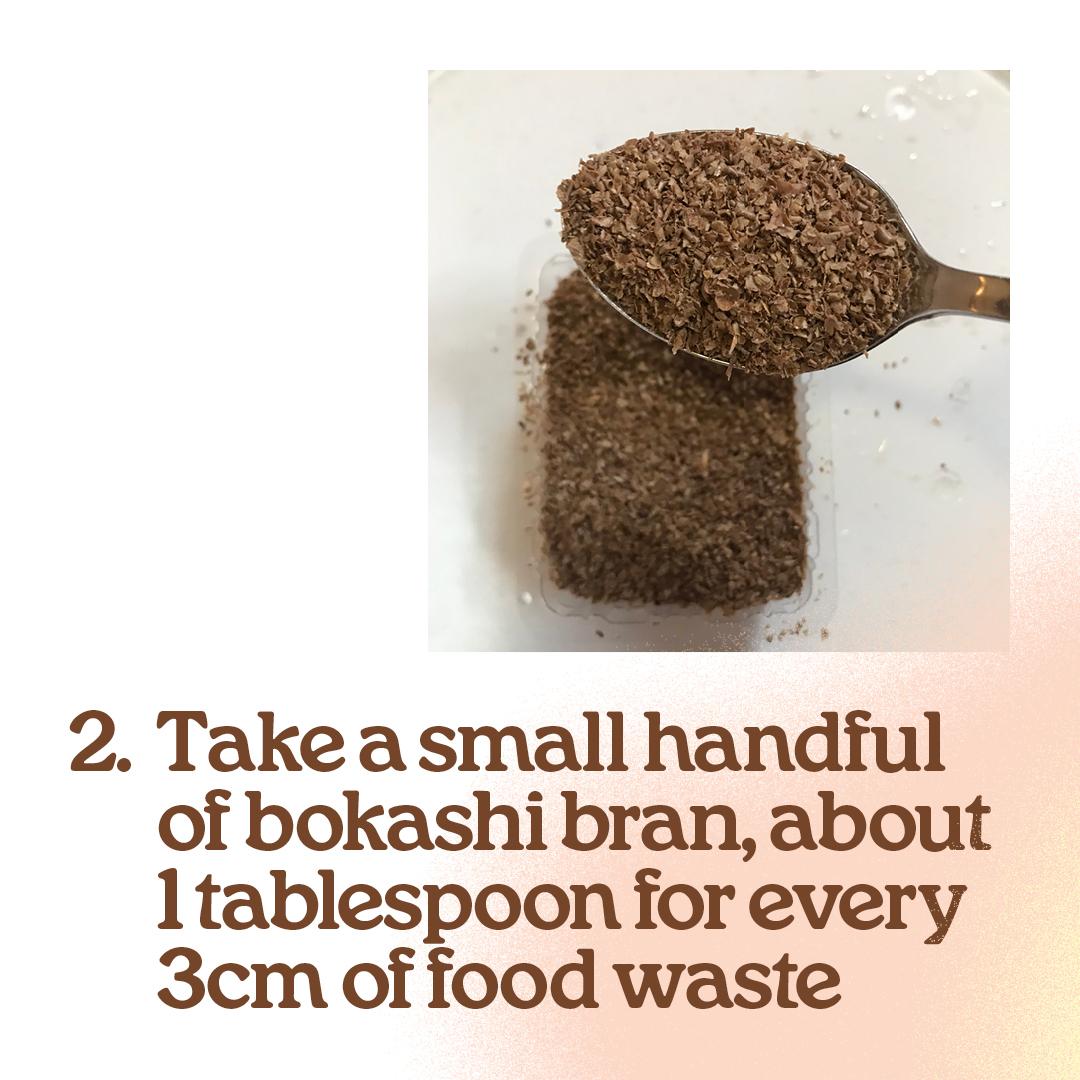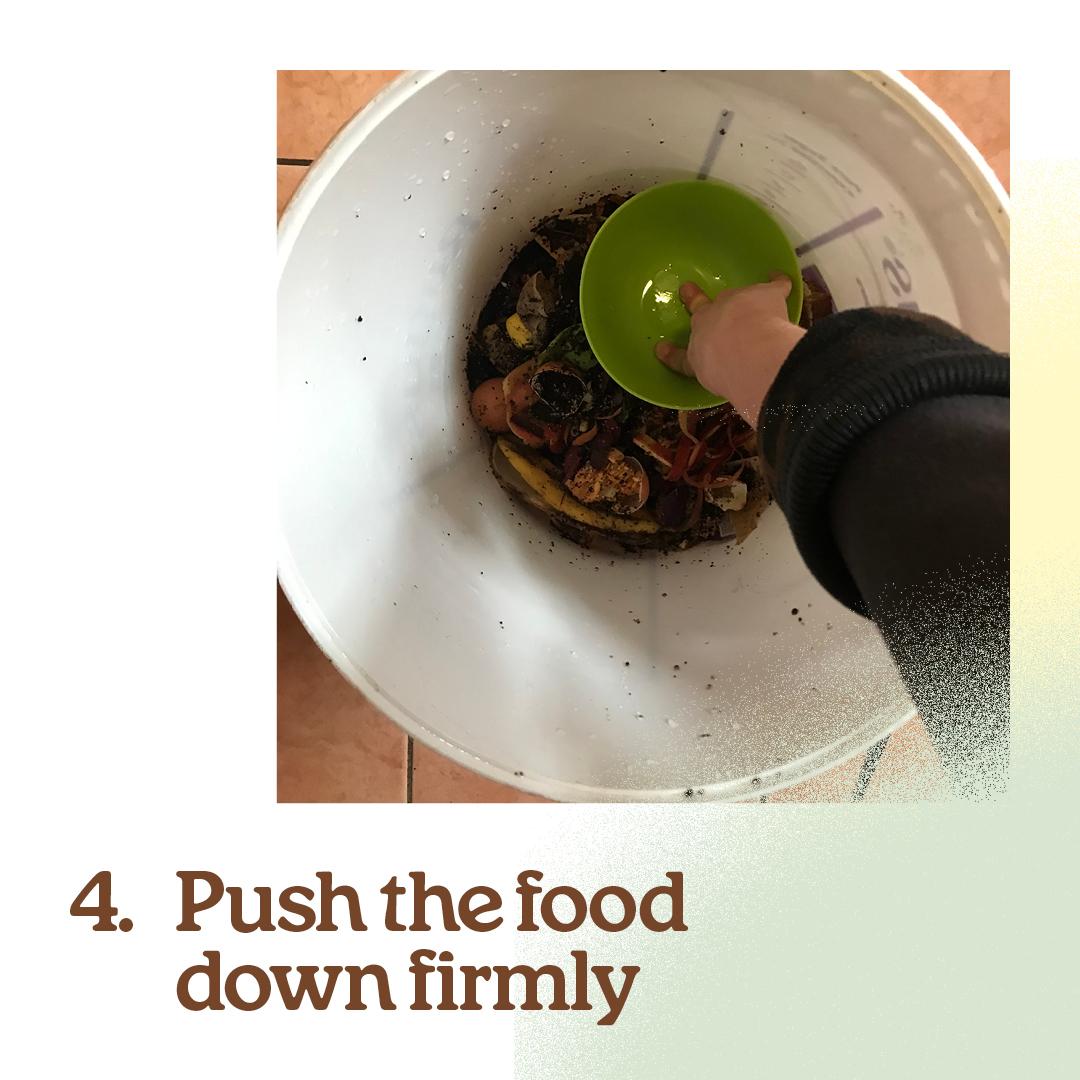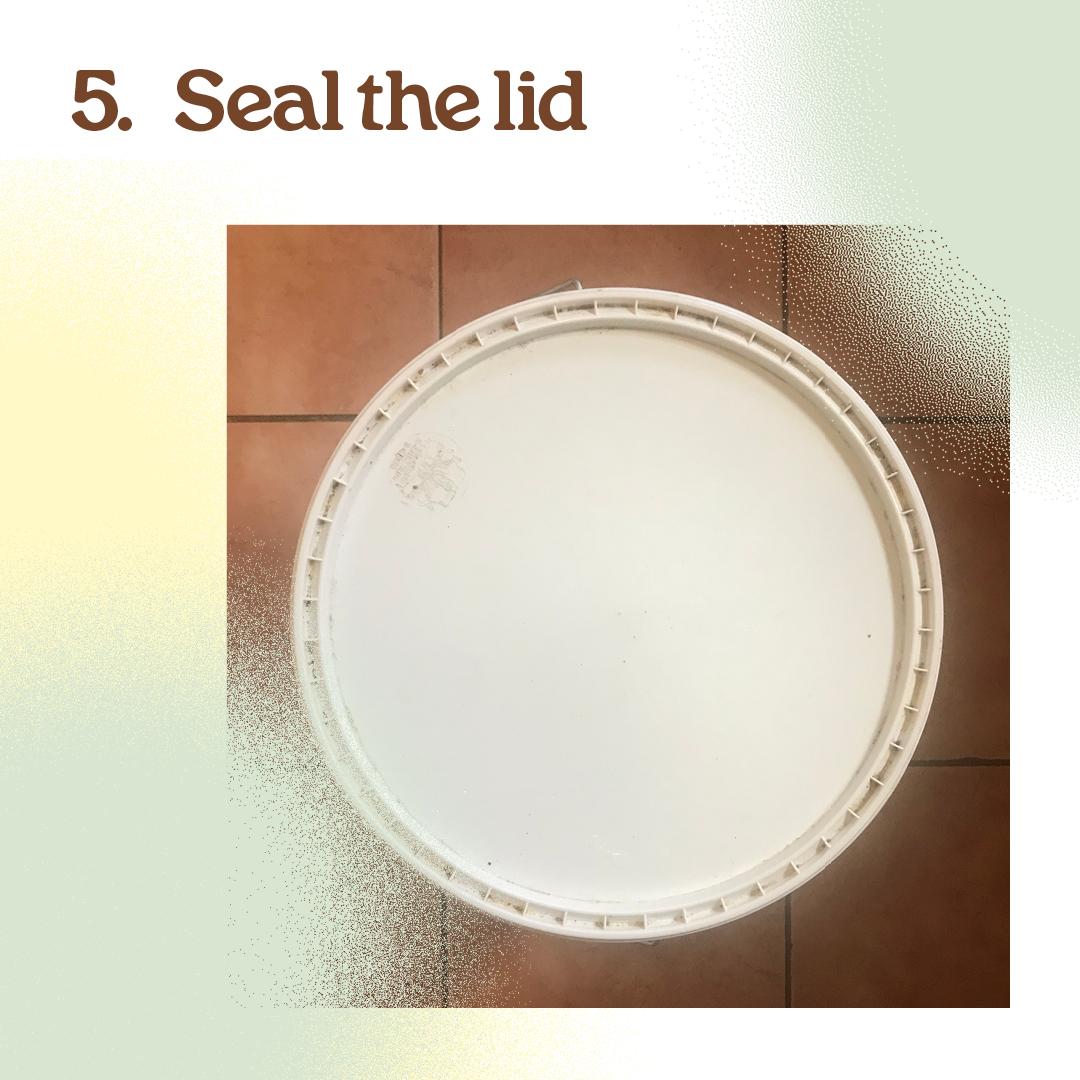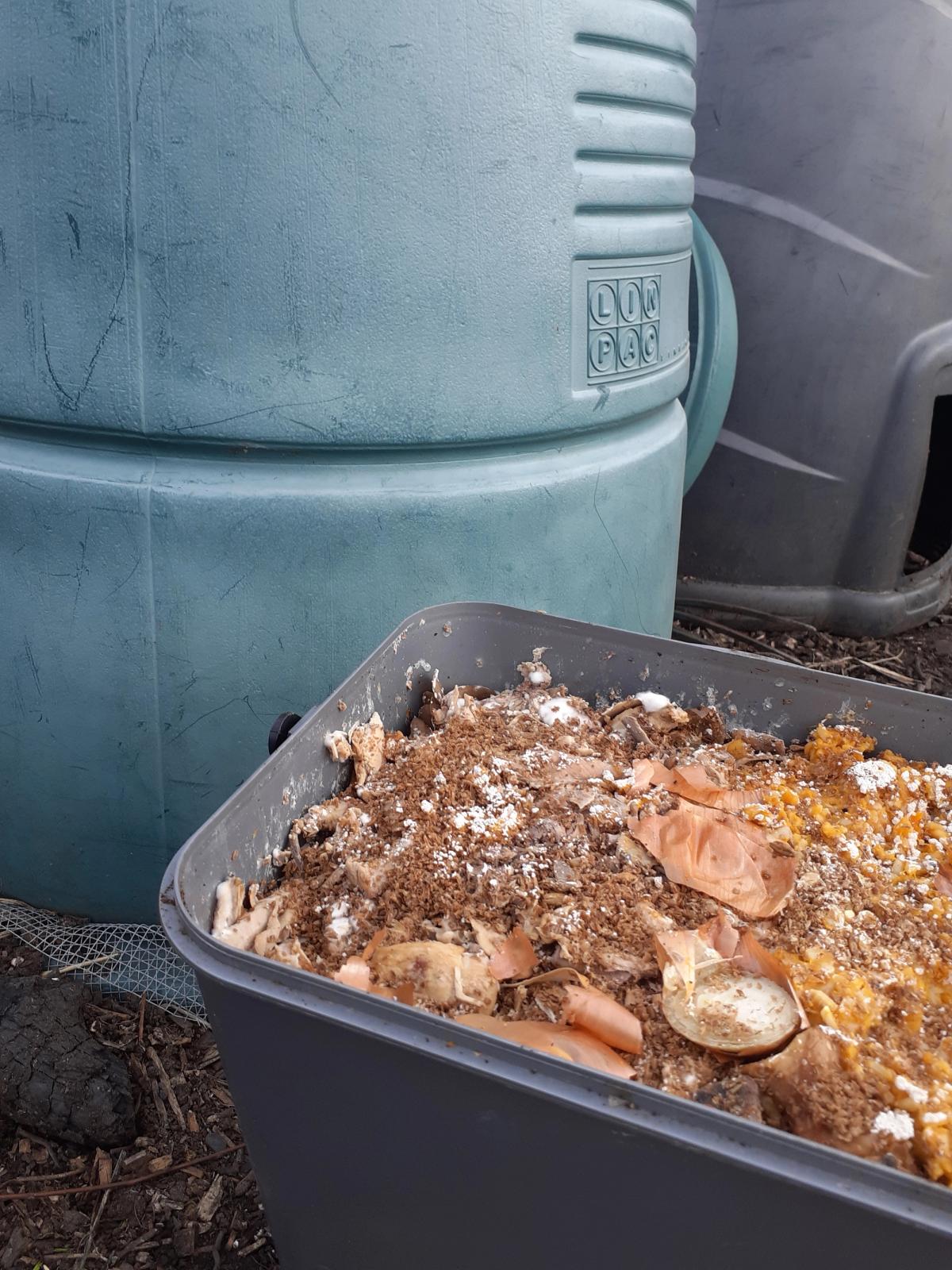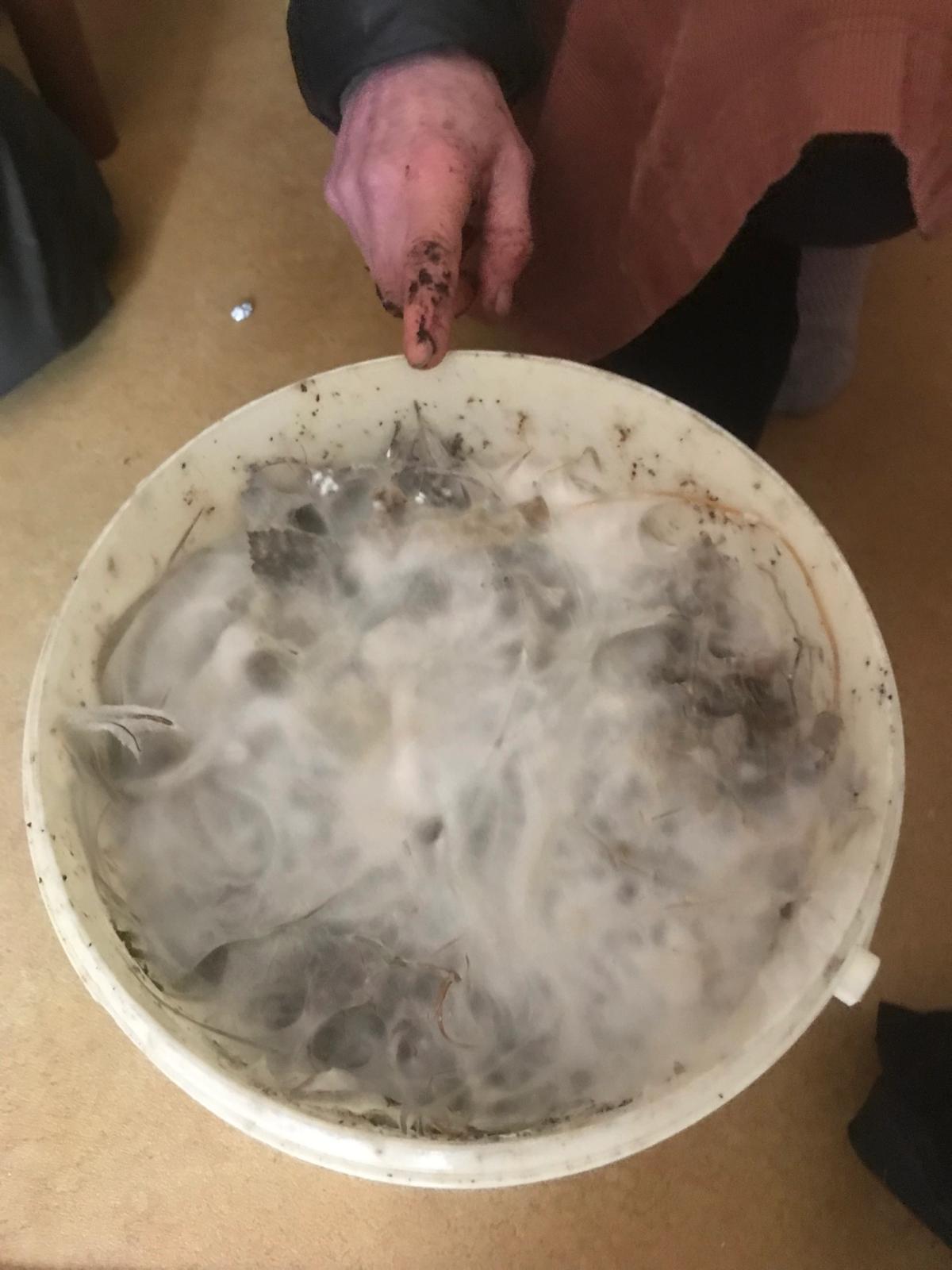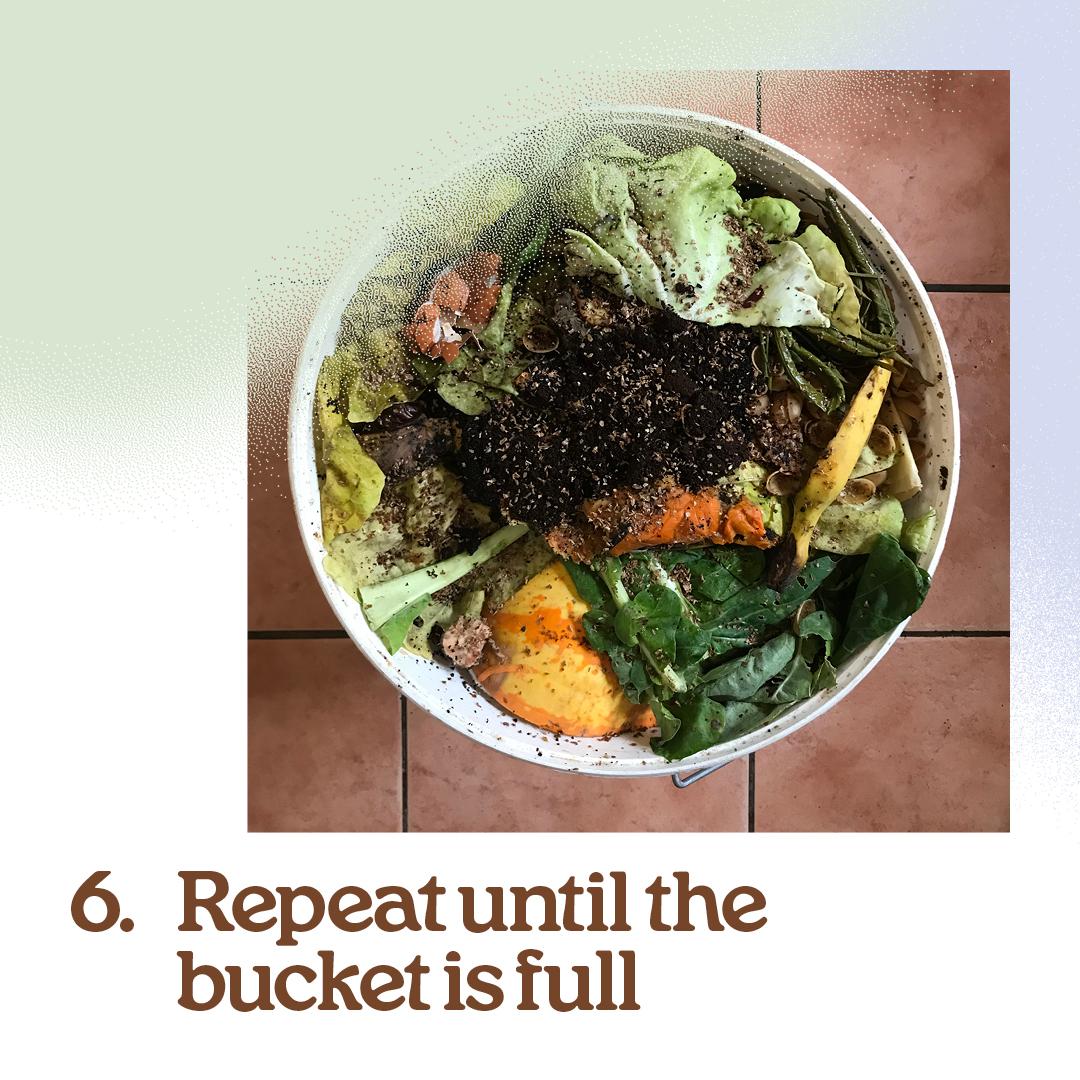‘Bokashi’ is a method used in the kitchen to ferment all food scraps, including meat and cooked food, so they can be composted safely without pathogens (harmful bacteria).
How it works
Bokashi bran looks a bit like dry oats, and is covered with special bacteria and fungi. It can be bought online. This bran is added to kitchen waste, and the bacteria and yeasts stop the food from going ‘bad’ or rotten.
This process is called fermentation, or some people call it ‘pickling’. It preserves it in a similar way to making yoghurt or kimchi. These bacteria and yeast like to grow in an anaerobic environment, which means without oxygen. For this, a bucket with a tight lid is needed – this can be a special bokashi bin bought online, or a large yoghurt container, which can often be found for free by asking at takeaways or curry restaurants.
Chopped cooked or raw scraps are added once a day to an airtight bucket, and pressed down with something like a potato masher to remove any gaps. Then a large pinch of bokashi bran is sprinkled over, and the lid is sealed. Scraps and bran are added once a day, until the bucket is full.
It is then left with the lid sealed tightly, for two weeks, ideally sheltered from cold or hot temperatures. Some buckets have a tap at the bottom to remove liquid. After two weeks the bucket can be opened. The food will not look like compost, it will look similar to when it was put in. It should smell vinegary, but not rotten, and there might be a white fluffy layer on the top which shows the process has worked. (For more information and troubleshooting click here).
The food can now be added to be a plastic compost bin, wooden bay, tumbler, or small amounts can be added to a wormery. It is a ‘green’, so needs to be mixed with plenty of browns, ideally something to soak up liquid such as shredded paper or card, plus some harder, twiggy materials to add air pockets.
Bokashi works better with fresh food – so don’t put anything mouldy or rotten into the bucket.
Pros
- You can safely compost meat, fish,dairy and cooked food without pathogens (bad bacteria).
- It can be added to any compost heap.
- Second hand buckets are free.
- Bokashi lets households or community groups to store food scraps without smells/pests until they are ready to compost it.
Cons
- You will need another compost bin to actually compost the fermented scraps.
- The bokashi bran needs to be bought.
- Some people do not like the smell of bokashi.
